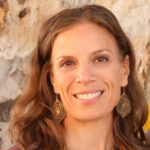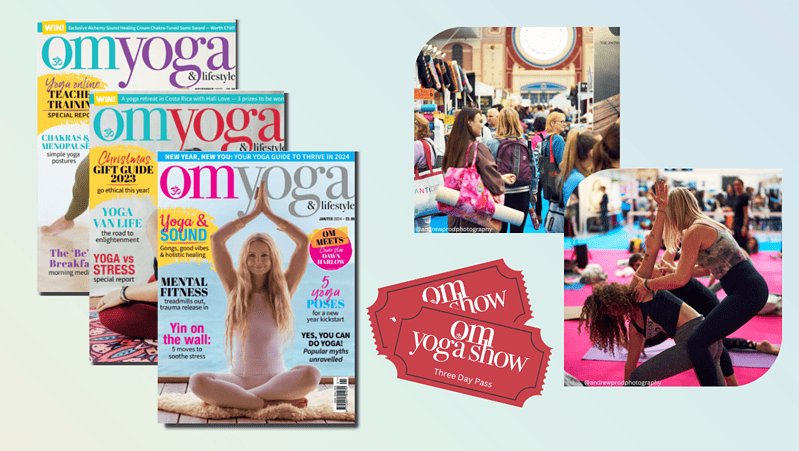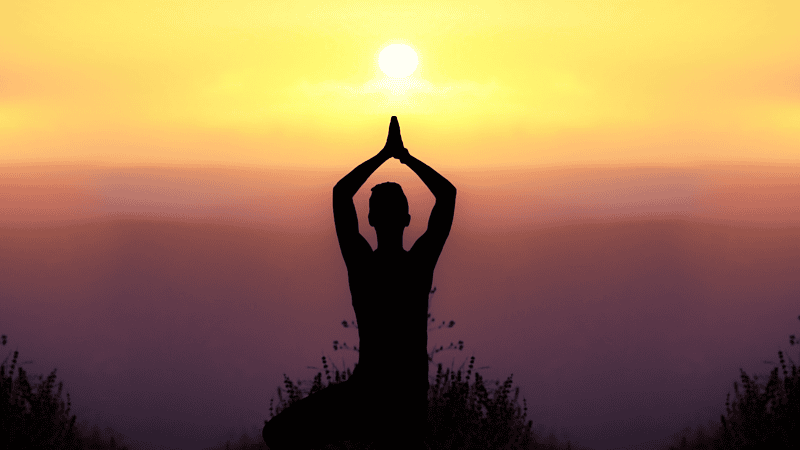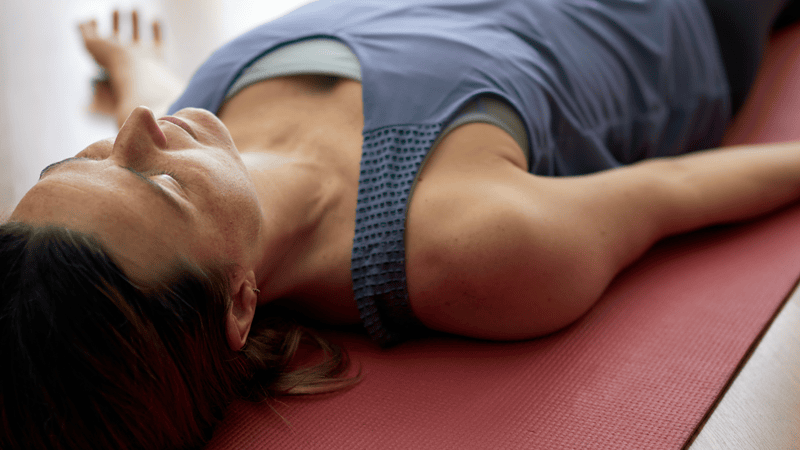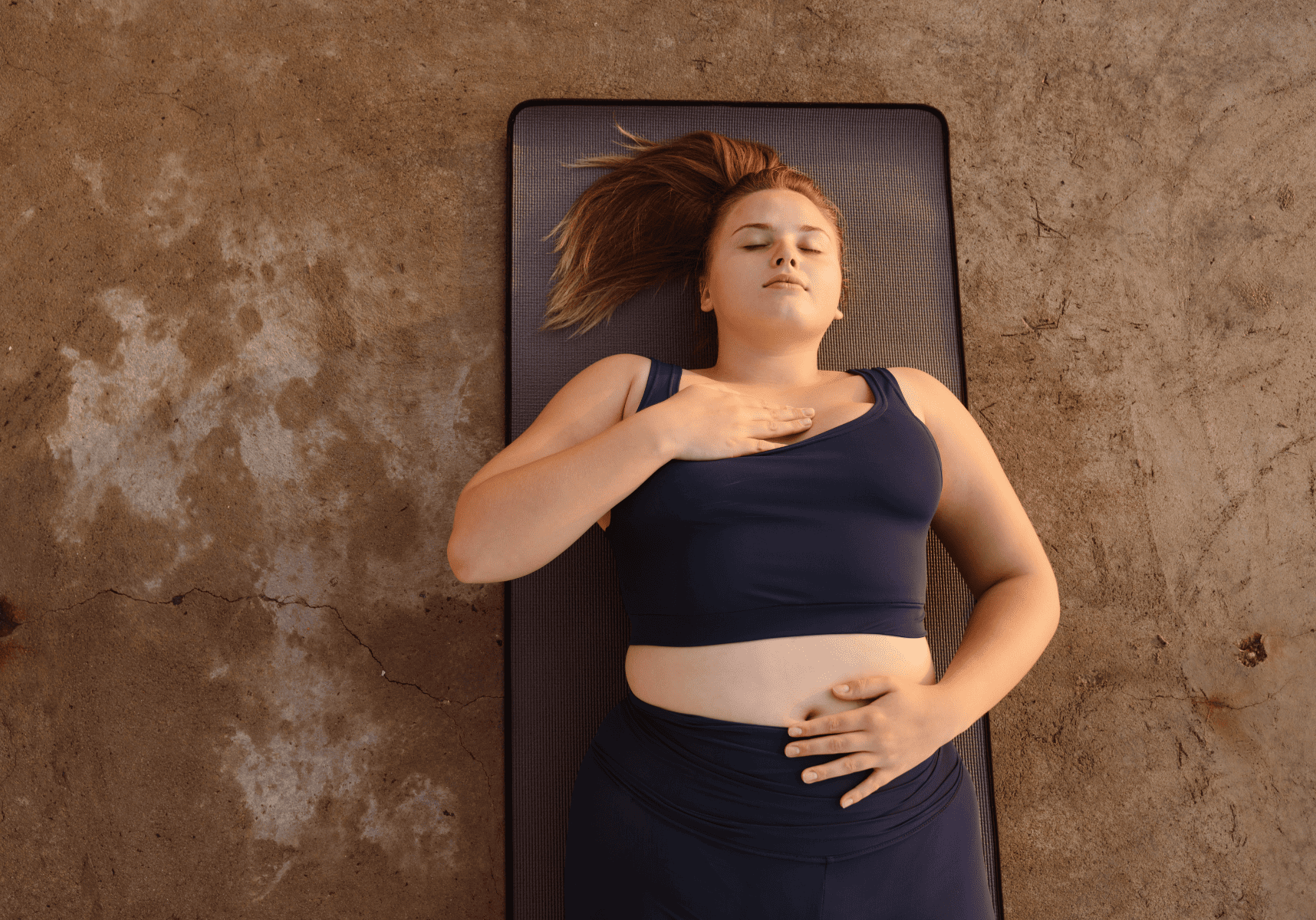
Breathing Through Resistance
Peace lives in this space, diffusing itself into the heart of the practitioner. By Marisa Atha
Reading time: 4 minutes
In class, my yoga teacher says, “When you meet resistance, breathe through it.”
This statement carries a powerful truth, not only in yoga, but in every aspect of life. When I have been brought to my knees by something—by the hardship of marriage, by the realization of my body’s limitations, by disappointment, by crippling grief—I have passed through this paralyzing moment simply by telling myself, Just breathe. That’s it. Just keep the air moving in and moving out.
The breath teaches us the natures of resistance and impermanence. The moment we try to hold onto the breath, whether at our fullest or emptiest, we notice a resistance; our bodies continue to move and shift, and so we must continually renew our acceptance of the nature of impermanence. In yoga, when we are challenged in a posture, the first reaction is to hold our breath.
Standing in tree pose, sensing the small muscles in our feet and ankles grab and struggle to hold balance, feeling the strain and stretch of our shoulders as we reach our branched arms above our heads, tempted to let our gazes and minds wander away from the task at hand, we tend to lock and tense, just wishing for the pose to be over. Remembering to release into the in- and out-flows of breath, we release and relax into the posture, accepting the reality of what is, neither clinging nor resisting, but allowing.
In my years practicing yoga, I’ve slowly peeled back layers of understanding about this ancient practice. The physical component that most people think of when they hear the word “yoga” is simply one of eight “limbs.” One of my meditation teachers says that the yoga practice is all just a big preparation to sit down and meditate—basically, we are getting the wiggles out so that our mind can focus.
I’ve experienced this, but I also have experienced the entire practice as a meditation in and of itself. Within the eight limbs of yoga, the seventh is specifically dedicated to the act of meditation, but each limb serves to focus the mind, the attention, the awareness, so that we may enter a state of being that is settled, connected, and free.
The longer I’ve practiced yoga, the more opportunities I’ve had to settle and open into this inner quiet. The distinctions between the lenses of neuroscience, energy healing, quantum physics, meditation, religion, or nature have become less important than the understanding that all of these belief systems are pointing to the same unnamable thing. I suppose it’s a rather poignant cosmic joke that, after searching everywhere for God, I found Him in a handstand.
My yoga studio is nothing special to look at. The walls are bland white, decorated spottily with a few pieces of yogic art work—a mandala, a tapestry of Mother Teresa, a down-dog in ceramic relief that a student made and donated. The ceilings are cracked, the ceiling fans outdated. A few crystals, singing bowls, and statues grace the small table in the front left corner. After my six years of membership there, they finally renovated the cubbies in the back—light wood now instead of dark, unmovable as opposed to the old system with pegs that kept getting dislocated and/or lost, causing the shelves to wibble and wobble.
The studio itself is simple, a little beat up, but well-used and well-loved. For, absorbed into that small rectangular space—a white box with wooden floors, and a few windows—is the energetic outpouring of every person who has practiced there. With each effort, each out-breath while holding an uncomfortable posture, each in-breath that signifies a renewal and a yes to this moment, to this practice, this life, we are giving of our essence, and in return, we are filled, and made incrementally more whole.
Our intentions, our hopes, our sorrows, our discomforts, our affirmations, our thanks, our angers, and our surrenders bounce off each other, through each other, and into each other as we each struggle through the seventy minutes of a yoga class.
We flank our practice with an “om,” not because we are westerners wanting and pretending to be Zen blissed-out versions of ourselves, but because we are offering a call to union. “Om” recognizes that which is essential in each of us and binds us together on the same path. We place our hands in prayer, at heart center, and with thumbs pressed against the breastbone, we feel the vibrations within as we call without.
We absorb the vibrations of every other “om” we hear. We are surrounded by the primary vibration of the universe—energy at its most fundamental, as its partials stack and multiply into a harmonic series of life force that sustains, renews, and rebirths. A bow and “namaste” at the end of class honors the divine universal light that exists within each of us.
Everything in the middle is just movement—but it is movement with attention and intention. The sun salutations, the vinyasas [flowing movements], and the asanas [poses] we perform in class offer us the opportunity to connect to the fundamental source of light and energy within each of us.
Yoga is a prayer I make with my whole body.
This all may be beautiful and true, but here’s also where it gets interesting. As humans, we have the capacity to narrow our gaze into the depths of ourselves and to glimpse the boundless nature of the universe, but we also have the capacity to be surrounded by this wonder, and be thinking of our grocery list, instead, or the itchy tag on our clothing, or the drippy, sweaty guy who put his mat way too close to ours.
And this confounding muddle is actually right where we should be. Because yoga offers us the same opportunity over and over. Yoga is a moving meditation that helps us discover and rediscover the nature of our own minds, our own capacities, and our own potentials.
Just as in a sitting mediation, we may bring the attention back to the breath, or the object of our meditation, when we catch it wandering, in yoga, we do the same. We bring the attention back to the breath, and back to the present moment. It is here that we meet ourselves.
Every time we tense in a posture, every time we wish the instructor would let us shift out of this pose already, every time we are asked where our attention lies and we find it miles anxiously ahead or years fixedly behind, we renew our intention to be right here, right now.
We hold the weight of our existence, as we feel the formidable power of stress within a pose. And when we release a pose, transitioning into another, actively resting, or even fully resigning into the restoration of shavasana [corpse pose] at the end of class, we have an opportunity to experience the counter-force of stress: the healing, the balm, the sanctuary.
In yoga, as in meditation, we meet the mind’s ultimate desire to cling and to resist change. And with each shift in and out of a posture, each time we take a seat on the cushion, each time we focus on the breath moving in and out of our bodies, we meet an occasion to accept the ultimately impermanent nature of the universe, with its dark and its light, its heavy and buoyant, its pain and its joy.
Peace lives in this space, diffusing itself into the heart of the practitioner, radically neutralising the chemistry therein.

